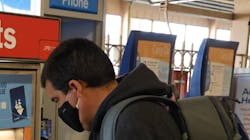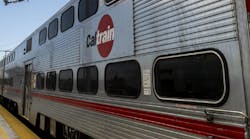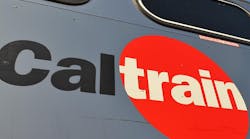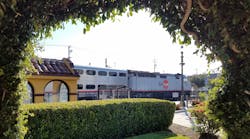The Caltrain Board of Directors have adopted a new fare structure, delaying previously approved fare increases until July 1, 2025, and lowering the price of Go Pass, Caltrain’s discounted fare product for businesses and students.
The new approach will result in more gradual, incremental fare increases than what was previously approved in September 2019, with each step only being $0.25, providing Caltrain’s ridership with more time to continue to grow, as weekday ridership has surpassed 20,000 per day, 21 percent higher than it was in September 2022, even despite service reductions due to the Electrification project in recent months.
Under the new policy, Clipper START will be adopted as a permanent fare category on Jan. 1, 2024. Clipper START is a pilot program that provides a 50 percent discount on Caltrain for eligible low-income San Francisco Bay Area residents.
Jan. 1, 2024, will also see a reduction in the current Go Pass price from $342 per pass to $275. Smaller organizations will also find Go Pass much more accessible, as the board voted to reduce the minimum eligible users from 84 to 20, reducing the minimum cost of participation to $5,500. On top of that reduction, it will allow substantial discounts (up to 80 percent off) for residents of affordable housing projects and for students.
Prior to this, residents of affordable housing projects and students were required to pay the full Go Pass price, but with the price reductions and additional discount, far more schools and affordable housing projects will be able to participate. Staff expect the reduced income from lowering the cost to be offset by an increase in demand for the Go Pass.
On July 1, 2025, the base fare will increase from $3.75 to $4.00 for adult and $1.75 to $2.00 for Eligible Discount riders. On July 1, 2026, the cost of a Zone upgrade will go from $2.25 to $2.50 for adult and $1.00 to $1.25 for Eligible Discount riders. On July 1, 2027, the base fare will increase from $4.00 to $4.25 for adult riders. These changes are expected to increase fare revenue by $1.1 million over the next three years.
The board also adopted policies around Next Generation Clipper that will bring about positive changes for riders. With Next Generation Clipper, Caltrain can accept open payments, meaning riders can pay for each trip using a credit or debit card tapped at a Clipper Validator, allowing riders to purchase a one-way ticket simply by tapping a credit or debit card. It also affirms Caltrain’s participation in the Free or Reduced Cost Transfers Regional Transit Pilot Program, which is part of the Regional Fare Coordination and Integration Study. This program, managed by Bay Area Rapid Transit and the Metropolitan Transportation Commission and set to launch along with Next Generation Clipper, will provide a transfer discount up to the region’s highest local transit fare to Clipper riders transferring to Caltrain within two hours of the first boarding.
The board approved the previous fare structure in May 2022, at which time they delayed scheduled fare increases in order to prioritize ridership growth.
On Sept. 1, Caltrain introduced four new temporary fare products designed to give riders more options as to how they travel, making it easier to save money by using Caltrain. These temporary fare products will be offered for six months until Feb. 28, 2024.





